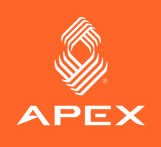Remote Sensing

Exploring for minerals is a challenge that miners need to approach with as much information as possible. Strategic and Rare metals or some of the minerals can easily be missed, and the process of searching for them is an expensive risk. That is why remote sensing and remote sensing data in mineral exploration is so important. Remote sensing is a set of special techniques and tools. These include radar, infrared, hyperspectral, LIDAR, sonar and geophysical sensors. These sensing tools are used to gathering information about the physical world by measuring the electromagnetic radiation, particle and field signals that emanate from objects. There are two key ways of using remote sensing data for mineral exploration:
1. Identification of the hydrothermally altered rocks by their spectral signature.
2. Mapping and analysis of the geology, faults and fractures of an ore deposit.
Due to large covering area, remote sensing is a valuable tool in mineral exploration that save time and money while providing helpful information. It is best used for the discovery of high-value commodities such as gold, copper and chromium which are becoming more difficult to locate. While it may not show exactly where major deposits are, data gathered through sensors can be used to narrow field surveys to smaller areas. Applications of remote sensing can also provide value by reducing the risk of a project and helping prioritize which sites to explore first. Expensive operations like drilling and field work can come after information is gathered.
Mineral exploration support
Hyperspectral airborne and satellite remote sensing can provide valuable information about the surface mineralogy and geology, which can be an indicator for subsurface geology and presence of ore bodies. This technique is based on the characteristic absorption features in the spectrum for the different minerals or mineral groups. Particularly, bands in the SWIR are useful to distinguish between mineral groups.
APEX has the innovative future vision to utilize hyperspectral drone sensor for maximum accuracy mineral exploration.
APEX has the innovative future vision to utilize hyperspectral drone sensor for maximum accuracy mineral exploration.

Mine planning
Stereo photography is an efficient tool to aid mine planning. New mines, or expansion projects, need detailed and timely topographical information to accurately cost and plan the engineering and construction phase of the mine. APEX’s BIGONE 8 HSE photogrammeter tool can yield relative accuracies on the order of 2 cm, which is highly valuable in a mine planning project and determine volume of dumps and managing the production and transferring extracted materials. APEX provides stereo photo data in formats directly compatible with software applications used for detailed mine planning projects.

Magnetometry
Unmanned Aerial Vehicles (UAVs) can be used to perform airborne geophysical surveys, in particular aeromagnetic surveys where mapping the spatial variations in the Earth’s magnetic field can be used to further the understanding of the geology in areas where the mineral potential is being explored. UAV-borne magnetic surveys are less expensive than either airborne or ground surveys. They can be carried out in areas that are too dangerous, too remote, or too expensive to carry out with manned aircraft or walking on the ground. UAV-borne magnetic surveys can deliver better data quality in environments where topography and safety standards prohibit manned aircrafts from acquiring data at optimum terrain clearances.

Mine reclamation
Mine reclamation is an important phase of a mining operation. Mine owners and engineering firms need good data to effectively decommission and remediate a mine site. APEX can provide hyperspectral, and digital stereo photos to support mine reclamation project phases. Following mine closure, detailed vegetation mapping can be carried out with a combination of LiDAR and hyperspectral data, which yield detailed physical and chemical characteristics of vegetation allowing for accurate monitoring of mine reclamation programs.





